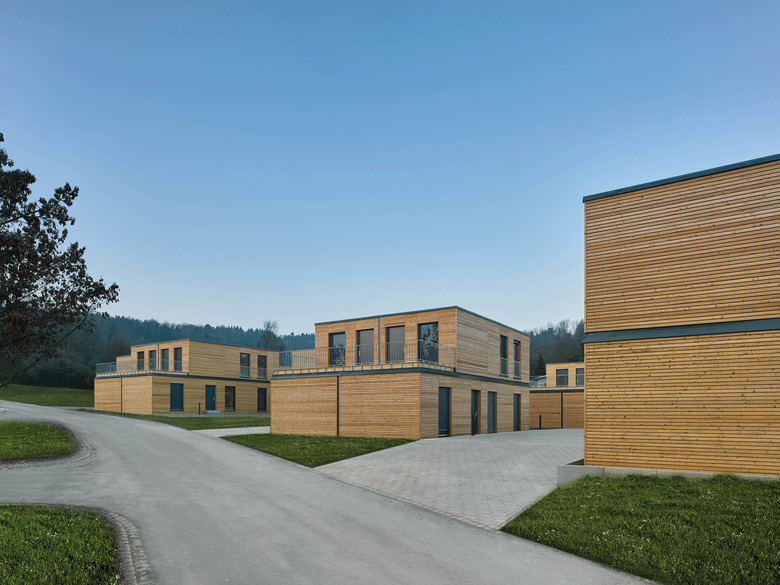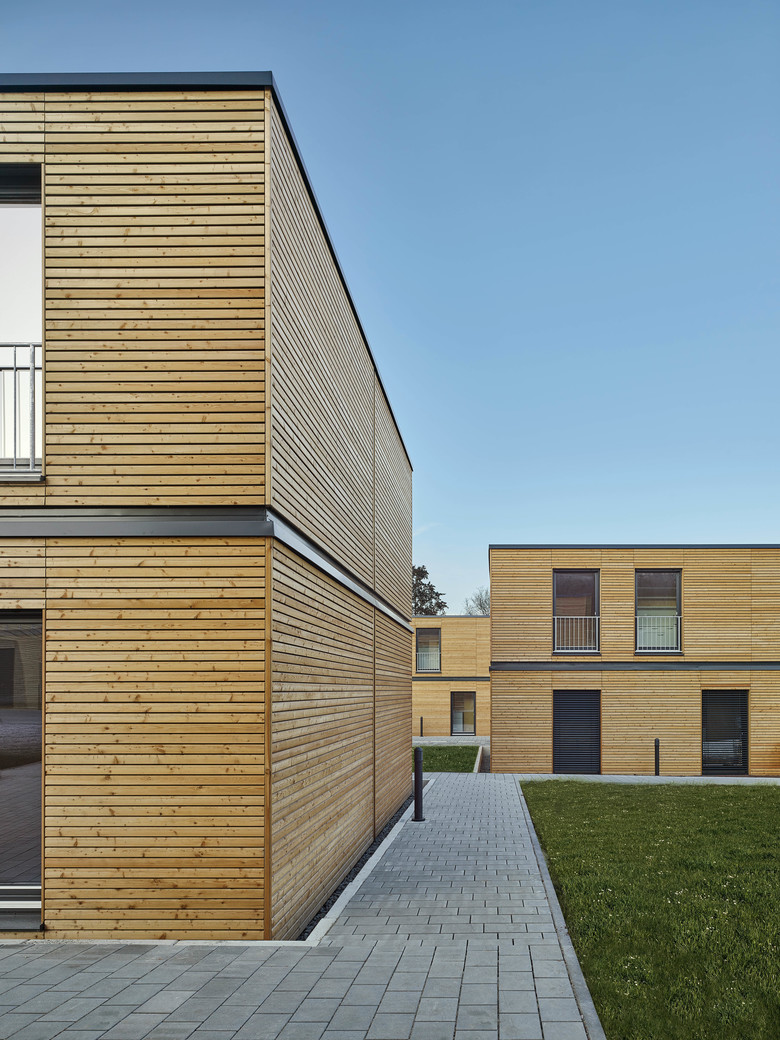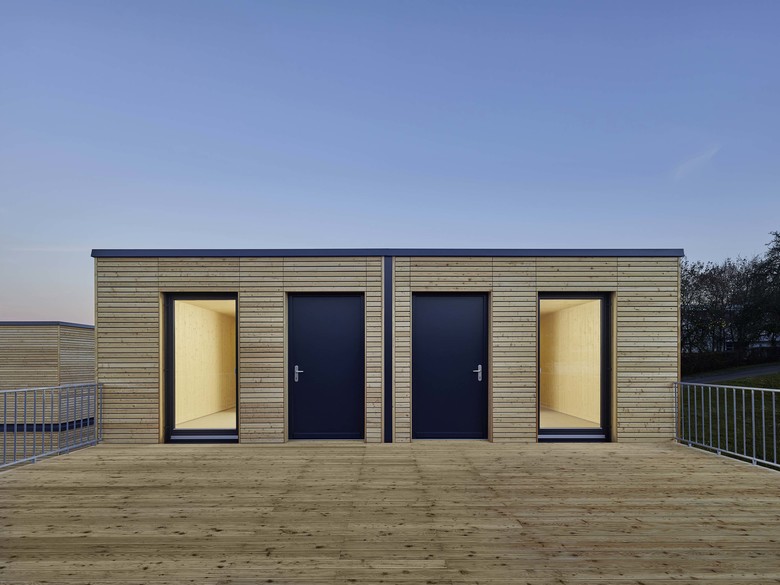Aktivhaus Development
Back to Projects list- Location
- Winnenden
- Year
- 2016
- Client
- Kreisbaugesellschaft Waiblingen mbH - Waiblingen (DE)
- Architecture
- Werner Sobek, Stuttgart/Germany
- Services by Werner Sobek
- Design, Technical Building Services plannings, Structural engineering, Site supervision
- Awards
- Premio Natura | German Timber Construction Award | materialPREIS | Hugo Häring Distinction
The German town of Winnenden was looking for a quick way to accommodate around 200 people on a plot of land at the edge of an existing residential area. The proposed housing estate needed to include a number of individual residential units, each with its own private bathroom and kitchen. As well as being economically viable and suitable for conversion in the future, it was important that the structures also comply with sustainability standards regarding energy consumption and their potential for deconstruction after use. A total of 38 modules from the aktivhaus (www.ah-aktivhaus.de) 700 Series were deployed at the development in Winnenden’s Schelmenholz district. This number included 22 examples of the 701 model, a structure which typically features a gross floor area of 45 m² and includes space for a bedroom, a kitchen and a bathroom. The 702 model was also installed 16 times. Each of these units has a gross floor area of 60 m², making them large enough to offer two bedrooms in addition to the kitchen and bathroom.
Built using the timber frame construction method, the aktivhaus modules were stacked to a height of two storeys on a gently rising plot of land that enjoys views of the neighbouring vineyards. As well as adapting the development to the topography of the site and the urban setting, it was also vital to design the exterior spaces in such a way that would make the areas surrounding the properties just as pleasant for residents to spend time in as the interiors of the structures themselves. The modules are intended to be used for approximately 3 years to provide longer-term accommodation for refugees fleeing the Syrian civil war. They can easily be converted to serve as social housing at the end of this period by carrying out a handful of internal modifications. As well as the residential units themselves, the housing development includes a technology module, two community rooms and a multifunctional space that contains such equipment as washing machines and dryers.


